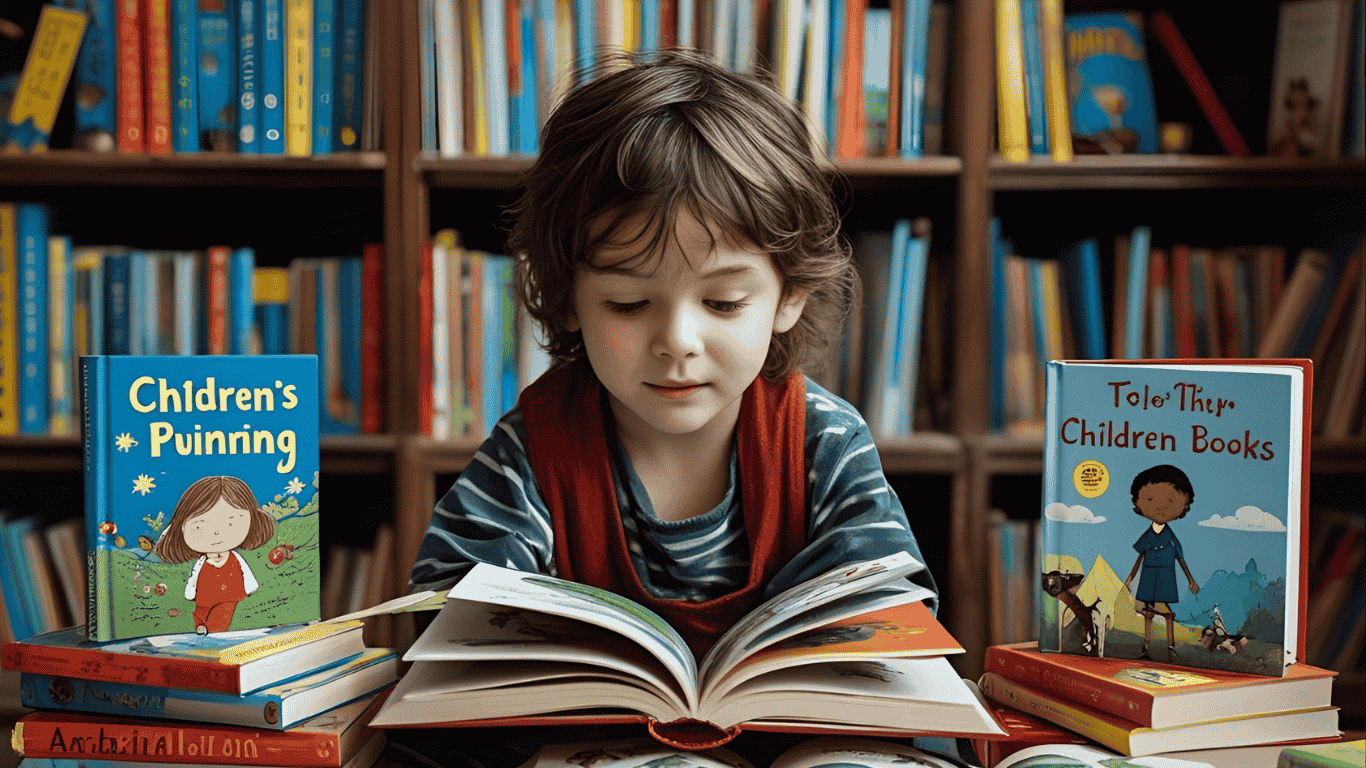Blog details
The Importance of Children's Books
Introduction
Children’s books are not merely printed pages aimed at the young; they are windows to imaginative worlds that weave life concepts and knowledge into their minds. They are seeds planted in the fertile soil of childhood, nurturing imagination and shaping their awareness of the world around them, making them the cornerstone of building a well-rounded and evolving personality.
How Children’s Books Shape Young Minds and Develop Their Imagination
The Role of Reading in Building Character and Developing Skills from Early Childhood
Reading in early childhood represents a journey of self-discovery and understanding the world. Through it, concepts of values, ethics, and language skills take shape. Children exposed to stories and characters learn to think critically and creatively, expanding their intellectual horizons. Reading stimulates cognitive growth and enhances focus and comprehension, forming the foundation of an enlightened and capable mind.
Types of Children’s Books
Picture Books and Their Importance in Developing Imagination
Picture books act as a bridge between reality and fantasy, transporting children to unlimited realms of visual and narrative creativity. Images spark the child’s curiosity and sensory perception, prompting them to imagine additional details and fueling their innovative spirit.
Activity and Coloring Books: Learning Through Entertainment
Activity and coloring books offer an interactive educational experience that combines fun with learning. Coloring enhances hand-eye coordination and develops focus and precision, while activities stimulate logical and creative thinking.
Simplified Educational Books: The First Concepts
These books present scientific, mathematical, and historical concepts in a simplified and enjoyable manner, making them the first steps toward systematically understanding the surrounding world. Their simple style ensures grasping complex ideas without boredom or fatigue.
Target Age Groups for Children’s Books
Preschool Books (0 to 3 years)
Characterized by bright colors, simple illustrations, and short texts relying on sound repetition to enhance auditory and visual perception.
Kindergarten Books (4 to 6 years)
Stories begin to have sequential events and diverse characters, introducing educational elements like letters and numbers in an engaging way that touches the child's curiosity.
Older Children’s Books (7 to 12 years)
Books in this stage delve deeper into more complex content, focusing on developing critical reading skills, analytical understanding, and broadening knowledge in various sciences and literature.
Characteristics of a Good Children’s Book
Simplified Language and Positive Repetition
The language used should be easy and understandable, with repetition of key sentences to reinforce memorization and comprehension, consolidating information and strengthening expressive skills.
Attractive Illustrations and Interactive Colors
Vibrant and colorful images enhance the book’s appeal, making reading an enjoyable interactive experience that stimulates the child’s senses and encourages further exploration.
Moral Values and Educational Messages
Noble values such as friendship, honesty, and respect are an essential part of the content, helping shape a balanced and conscious personality.
How to Choose a Suitable Book for Your Child?
Selection Criteria Based on Age and Interests
Consider the appropriateness of the content for the child’s age, selecting topics that resonate with their interests and foster a love for knowledge.
Ensuring Educational Quality and Safe Content
A good book respects educational aspects and is free from phrases or images that might cause anxiety or negatively impact the child's psyche.
The Impact of Children’s Books on Mental and Emotional Growth
Developing Linguistic and Cognitive Skills
Books contribute to expanding vocabulary and improving pronunciation, in addition to stimulating critical and analytical thinking through storytelling and puzzles.
Supporting Emotional Intelligence and Enhancing Empathy
By encountering the feelings and characters in stories, children learn how to express their emotions and understand others’ feelings, cultivating social empathy.
Examples of Outstanding Children’s Books
-
Encyclopedia of Planet Earth
-
Encyclopedia of Marine Creatures
-
Encyclopedia of Space
-
Science Encyclopedia
-
Amazing Scientific Facts
-
Trains, Planes, and Ships
-
Mathematics for Curious Kids
-
The Water Cycle
-
Environmental Habitats
-
Earthquakes
-
Mountains
-
Rivers and Coasts
-
Planet Earth
The Role of Parents and Educators in Fostering a Love of Reading
Ways to Encourage a Child to Read Books
Encouragement comes through creating a stimulating environment, setting dedicated reading time, and choosing books that match the child’s interests. Continuous praise and motivation boost the desire to explore.
Shared Reading as an Enjoyable Family Activity
Family reading sessions strengthen family bonds and increase the child’s understanding of stories through dialogue and discussion.
Technology and Children’s Books
E-books and Interactive Books
E-books provide various presentation methods including sound, animation, and educational games, adding a new dimension to the reading experience.
Reading Apps for Children: Advantages and Risks
Reading apps offer easy access to content but require monitoring screen time and security settings to avoid overdependence or exposure to inappropriate content.
The Importance of Illustrations in Children’s Books
How Images Help Convey Meaning to Children
Illustrations simplify understanding, clarify abstract ideas, and connect text to visual reality, enhancing learning.
The Difference Between Static and Animated Illustrations
Static images allow the child to focus and contemplate, while animations attract attention and increase interaction but may cause distraction if overused.
Summary and Recommendations for Parents and Teachers
Best Practices to Encourage Children to Read
Choosing age-appropriate books, creating a daily reading routine, and integrating reading into everyday activities ensure a sustained love of learning.
Home Library for Children: How to Start and Where to Look?
Start by purchasing a variety of books from specialized bookstores, in addition to using digital resources, and update content regularly to meet the child’s growth.
Frequently Asked Questions
What Are the Best Types of Children’s Books for Each Age Group?
Simplified, colorful books for toddlers, and story and science books for older children.
How Do I Choose a Book That Helps Develop My Child’s Language and Cognitive Skills?
Look for books containing new vocabulary, thought-provoking stories, and interactive exercises.
What Is the Importance of Illustrations in Children’s Books and Their Role in Delivering Content?
Illustrations increase the child's understanding, stimulate imagination, and facilitate linking information to texts, making learning more enjoyable and effective.

 Your guide to the best books o...
Your guide to the best books o...
 How do you get free e-books?
How do you get free e-books?
 Your guide to reading various...
Your guide to reading various...
 Download books for free: A com...
Download books for free: A com...